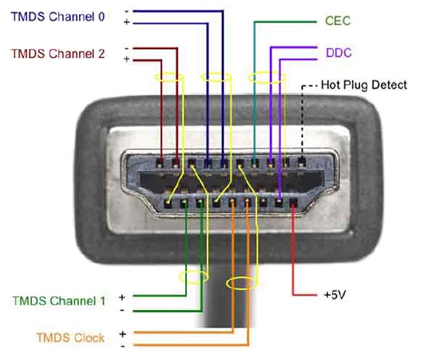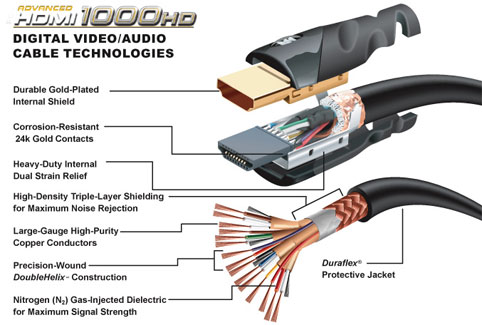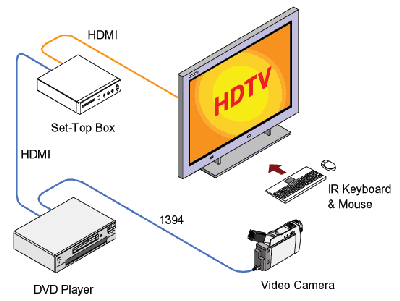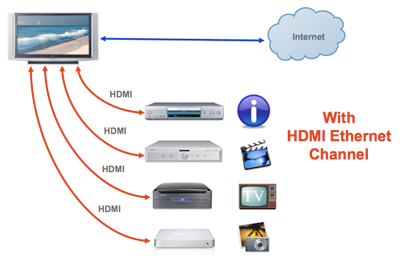HDMI
Stands for
"High-Definition Multimedia Interface." HDMI is a digital interface
for transmitting audio and video data in a single cable. It is supported by most
HDTVs and
related components, such as DVD and Blu-ray players, cable boxes, and video game
systems.

While other
types of A/V connections require separate cables for audio and video data, HDMI
carries the audio and video streams together, greatly eliminating cable
clutter.

For example, a component cable connection requires three cables for
video and two for audio, totaling five cables in all. The same information can
be transmitted using one HDMI cable.
Because HDMI is a digital connection,
HDMI cables are less prone to interference and signal noise than analog cables. Also, since most components,
such as DVD players and digital cable boxes process information digitally, using
HDMI eliminates the analog to digital conversion other interfaces require.
Therefore, HDMI often produces the best quality picture and sound compared to
other types of connections.

HDMI cables are
typically more expensive than analog cables, largely because they cost more to
manufacture. Besides, the single all-purpose connection may alone be worth the
difference to those who don't like dealing with confusing cables and
connections.
The
HDMI Advantage
HDMI technology
is the global standard for connecting high-definition equipment. HDMI is the
intelligent, all-digital interface that delivers both dazzling quality and
unmatched ease of use. More than 1,200 of the world’s largest consumer
electronics, PC and mobile device manufacturers incorporate HDMI connectivity
into their products.
One Cable Does It
All
HDMI technology transmits
crystal-clear digital video, multi-channel surround audio, and advanced control
data through a single cable. One HDMI cable can replace as many as eleven older
cables, making your entertainment system easier to connect and easier to
upgrade. You won’t find that level of elegant simplicity in any other
connection.

Pure Digital
Performance
Unlike older cables, an
HDMI connection transmits uncompressed audio-video data in 100 percent digital
form. That adds up to world-class viewing experience, with pixel-for-pixel
video accuracy and audiophile-quality sound.
1080p and beyond - HDMI is built to
accommodate extremely high-resolution video, with bandwidth to spare for the
next generation of HD equipment.
System intelligence - HDMI-connected
components have the ability to query each other’s capabilities and
automatically adjust themselves for optimal viewing. A TV and a DVD player, for
example, can auto-negotiate settings like resolution and aspect ratio.

Advanced features - The HDMI
Specification includes many advanced functions that are helping to change the
way we experience home theater – now and in the future. Some of these optional
features include:
- 3D support
for immersive movies and gaming
- Higher
resolutions, like 1440p and 4K
- Faster
refresh rates, like 120Hz.
- Deep
Color, taking the HDTV palette from millions to trillions of colors.
- Ethernet
connectivity, allowing connected devices to share an Internet connection.
Connect Everything
HDMI technology is the
de-facto standard for connecting HD equipment. Virtually every TV, AV receiver,
DVR, Blu-ray Disc player, and set-top box sold today comes standard with at
least one HDMI connection. You’ll also find HDMI connectors on a growing list
of other products including multimedia PCs, laptops and netbooks, gaming
consoles, camcorders, digital still cameras, and mobile devices, giving you even
more options on how you connect to the expanding universe of HD entertainment.
No comments:
Post a Comment